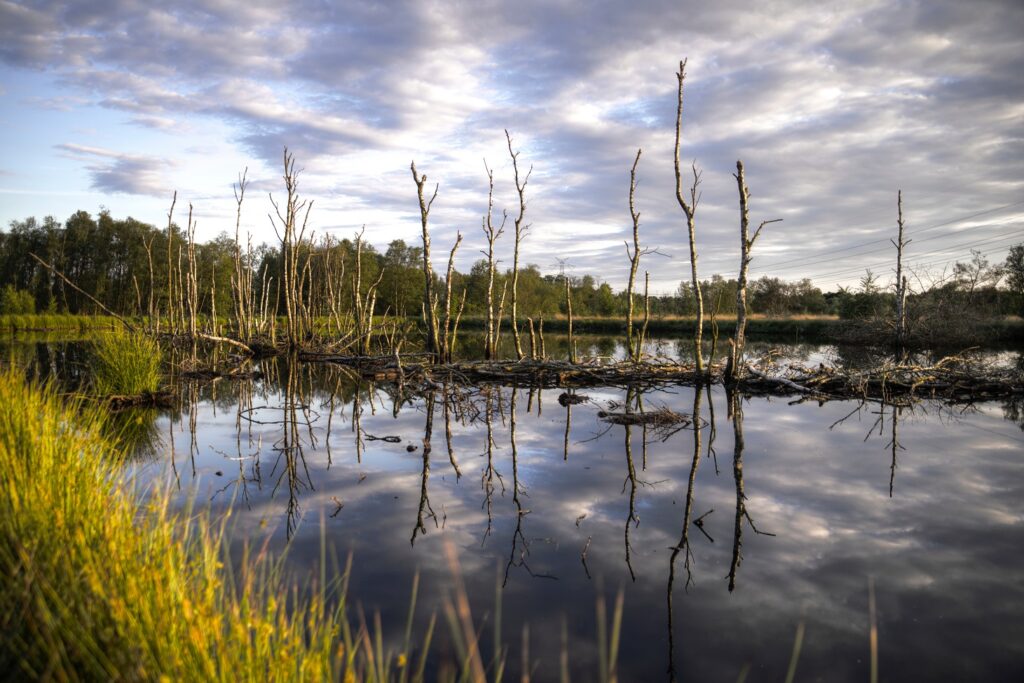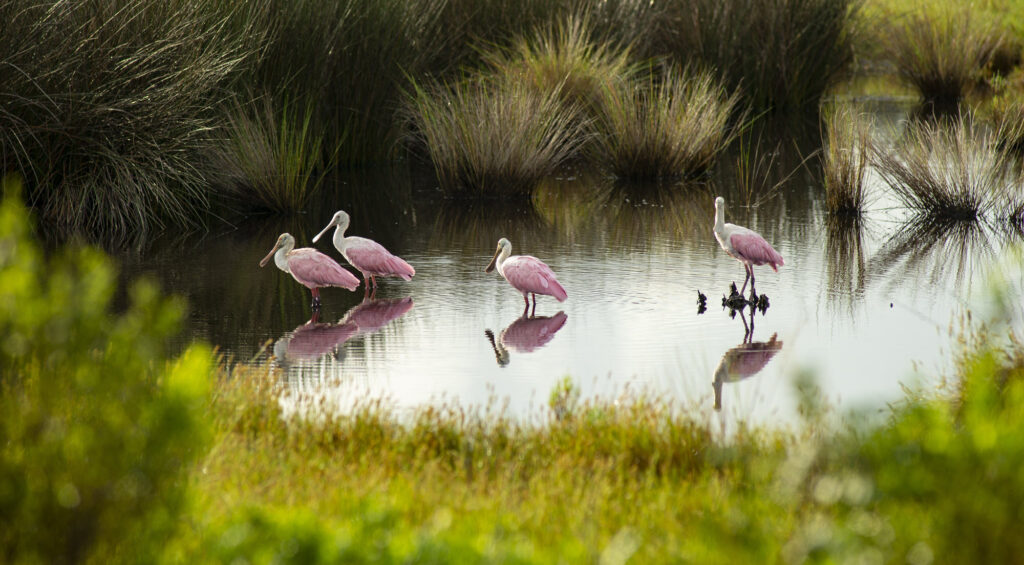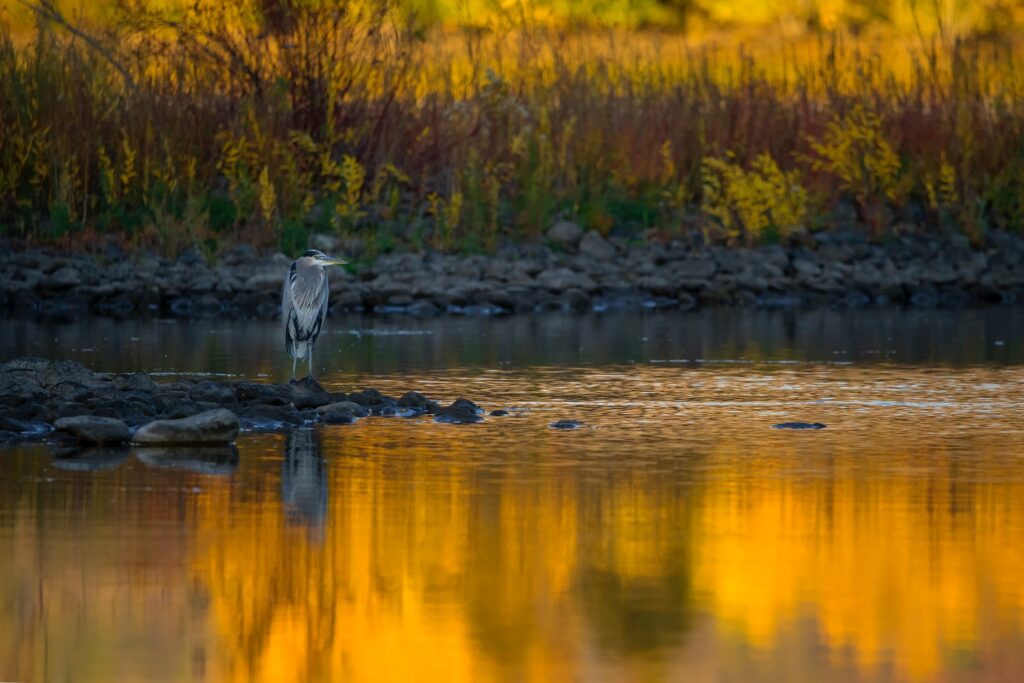World Wetlands Day is a United Nations International Day of Importance designed to educate people about these natural areas’ vital role in our ecological, economic, and social health. World Wetlands Day commemorates the signing of the “Convention on Wetlands of International Importance” in 1971. A total of 172 countries have adopted this Convention, vowing to designate and protect the wetlands within their borders. Each country has added at least one such wetland to the List of Wetlands of International Importance (also known as Ramsar sites).
The theme of this year’s observance is “Revive and restore degraded wetlands.” Here are some important details to know about wetlands and their environmental benefits.

Wetlands are one of nature’s most productive ecosystems since they help provide a habitat to fish, wildlife, and plants (in fact, wetlands play host to 40% of all plant and animal species!). Often referred to as the “kidneys of the earth,” wetlands function as a major carbon sink. They support groundwater recharging, mitigate natural disasters, provide clean drinking water, offer food to a diverse group of plants and animals, and support cultural and recreational activities. According to the EPA, wetlands are links between land and water, where the flow of water, the cycling of nutrients, and the sun’s energy meet to produce a unique ecosystem characterized by hydrology.
If wetlands disappear, the effects will impact the quality of water and the populations of fish and birds, and societies will experience an increase in floods. Additionally, because wetlands are carbon sinks, their destruction results in large carbon emissions into the atmosphere.

Unfortunately, Earth is losing its wetlands three times faster than its forests. 35% of our wetlands have disappeared in the past 50 years alone. With the multiple challenges that wetlands face–from climate change and sea level rise to drainage and excavation–World Wetlands Day is a reminder of the importance of learning about wetlands and the need to protect these lands that currently cover 5.5% of the land in the 48 contiguous states.
The classification of a wetland is determined by how the land has been formed, the varieties of plants that live there, and its location. The EPA website says that an estimated 95% of these wetlands are freshwater; the rest are marine or estuarine. In the U.S., most wetlands are in Minnesota, Florida, and Louisiana due to the climate of those locations. The EPA-dedicated site for wetlands shows two general categories of wetlands: coastal or tidal wetlands and inland or non-tidal wetlands. Details below.

Coastal/Tidal:
Found along the Atlantic, Pacific, Alaskan, and Gulf coasts, coastal or tidal wetlands are closely linked to our nation’s estuaries, where seawater mixes with fresh water to form an environment of varying salinities. The saltwater and the fluctuating water level (due to tidal action) combine to create a rather complex environment for most plants. Therefore, many shallow coastal areas are unvegetated mudflats or sand flats. Some plants, however, have successfully adapted to this environment. Certain grasses and grass-like plants that adapt to the saline conditions form the tidal salt marshes that are found along the Atlantic, Gulf, and Pacific coasts.
Inland/Non-tidal
Inland or non-tidal wetlands are most commonly found on floodplains along rivers and streams (riparian wetlands), in isolated depressions surrounded by dry land (for example, playas, basins, and “potholes”), along the margins of lakes and ponds, and in other low-lying areas where the groundwater intercepts the soil surface or where precipitation sufficiently saturates the soil (vernal pools and bogs). Inland wetlands include marshes and wet meadows dominated by herbaceous plants, swamps dominated by shrubs, and wooded swamps dominated by trees. Certain types of inland wetlands are common to particular regions of the country.

Also, according to the EPA, wetlands can be influenced by natural and human-induced stressors such as:
- Hurricanes, sea-level change, and certain agricultural and forestry practices can increase erosion or sedimentation.
- Human modifications such as pipes and channels can alter wetland types, elevation, or hydrology.
- Withdrawal of groundwater or surface waters can reduce the water flow into wetlands.
- Pollutants in groundwater and fresh surface waters that flow into wetlands can be toxic to plants and animals and accumulate in wetland sediments.
- Invasive species can alter the composition of wetland communities.
- Wetland loss can add stress to remaining wetlands. For example, if fewer wetlands are available to filter pollutants from surface waters, those pollutants could become more concentrated in the remaining wetlands. Wetland loss can also decrease habitat, landscape diversity, and connectivity among aquatic resources.
- Conversion from one wetland type to another—for example, cutting down trees in forested wetlands—can have a significant ecological impact by changing habitat types and community structure.
To best help protect wetlands, you can follow some of these easy-to-do recommendations.
- Plant a buffer strip of native plants, which resist diseases
- Eliminate the use of pesticides and fertilizers when working on your lawn
- Remove non-native plants and invasive species
- Keep your pet waste out of wetlands
For further information, please visit the UN website for this observance here.
 Food
Food Farmers
Farmers Sustainable Living
Sustainable Living Living Planet
Living Planet News
News